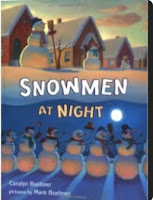With the recent emphasis on standards, skills, and test scores in school, there has never been a more important time to be mindful of the need for imagination, creativity, and play in the lives of young students. There have been countless articles written and research projects undertaken to reinforce the need for creativity and play in the lives and education of children. Perhaps one of the most well known is the Ted talk by Sir Ken Robinson. Although the talk was presented in 2006, the problem persists, and perhaps, is even greater today. in many schools, than it was then!
Even if you are teaching in a standards or skills-based learning environment, most standards and skills-based learning can take place within creative activities. The learning will undoubtedly be more meaningful, connected, and will be more likely to result in mastery, when presented in a playful way. Here is one example I have used with both first and second graders, but can easily be adapted for any elementary grade level!
What child does not like to build a snowman? Regardless of where you live, you can make a
snowman out of paper mache! Set aside one day for the messy part of this project. Cover a long table and the floor beneath with painter's plastic drop clothes. Arrange for parent volunteers and paint shirts for the kids. Send home a note in advance, asking the kids to wear old clothing. Gather balloons, newspaper (our local newspaper office has lots of old papers that they will donate) torn or cut in strips, bags of flour, large bowls or dishpans for the paper mache goop, and small plastic bowls or margarine tubs to hold the completed snowmen while they dry. I always inflated the balloons the night before, taping two together with masking tape, and storing them in large trash bags for easy access. On the day of creation, I asked parent volunteers to be on hand throughout the day until all the children had finished. Working with six to eight kids at a time, they assisted those making snowmen, while I worked with the rest of the class in other learning activities. You will need a place to store the wet snowmen while they dry. A windowsill, shelf, or other location will work. Be sure to cover that area with plastic as well and have plenty of small plastic bowls or containers on which to stand the snowmen. They take several days todry completely, so plan ahead. As the tops dry, remove them from the bowls to allow the bottoms to dry as well. Once they are completely dry, a pin will pop the balloons and pushing down gently from the top will form a flat bottom allowing the snowmen to stand on their own.
Decorating the snowmen requires a variety of supplies like construction paper, crepe paper, buttons, pompoms, wiggly eyes, etc. Craft glue works better than school glue to hold things in place. An afternoon of creativity will result in a classroom full of delightful characters sure to bring smiles and enthusiasm! The learning, however, has just begun! The snowmen are the center of an abundance of learning opportunities. I will share a few I have used, then use your own creative thinking to find connections to the standards in your grade level!
Math Applications:
- Geometric shapes (cylinder, cone, sphere)
- measurement (height, weight, circumference)
- child created story problems acted out with the snowmen. (Have each child write a story problem to be reproduced into a booklet or worksheet of problems for the class to solve.)
Science Applications:
- Solid, liquid, and gas (balloons, paper mache goop, flour and water, evaporation)
- weather
Literacy Applications:
- Read a variety of snowman stories.
- Write how-to build a snowman (either with snow or paper mache).
- Write creative snowman stories emphasizing fiction story elements like characters, setting, problem, events, solution, beginning, middle, and end. (I always used the stories as an opportunity for the kids to make an actual book, complete with cardboard and cloth covers, and illustrations. The books were then on hand for the other children in the class to read during reading time. They were sent home with the snowmen when the project was completed.)
- Create a class version of the well known Snowmen At Night, by Caralyn Buehner.
Collaboration, rhythm and rhyme, theme, imagination, and multimedia skills are all required for a successful project. Once the class decides on a theme, small groups are tasked with thinking of a location to photograph the snowmen and the rhyming words to accompany the picture. I used a paraprofessional in my class to take the groups, along with an ipad or other camera, to stage their photograph. The completed story was then reproduced for each child and became a book to read in class and at home. We also created a video of the story to post to our Youtube Channel. Examples of class themes have been Snowmen at School at Night and Snowmen on the Playground.

Here is an example of one of our multimedia videos:
The possibilities for learning are endless with a project like this. A few days of messy, busy creativity will allow your young students to learn with their imaginations and playful spirits. Plan your learning targets ahead of time, then watch as engagement and mastery abound!

















































